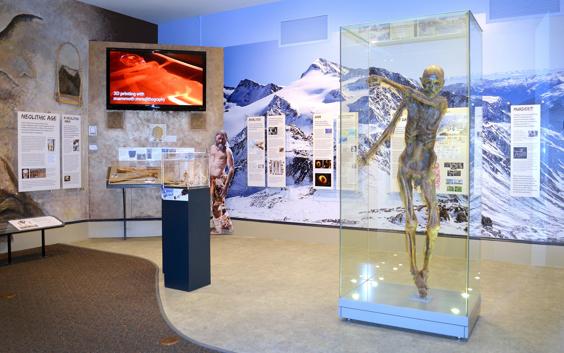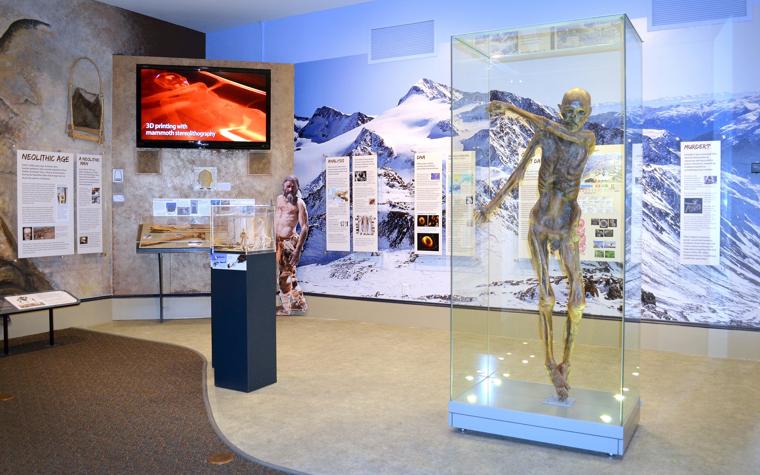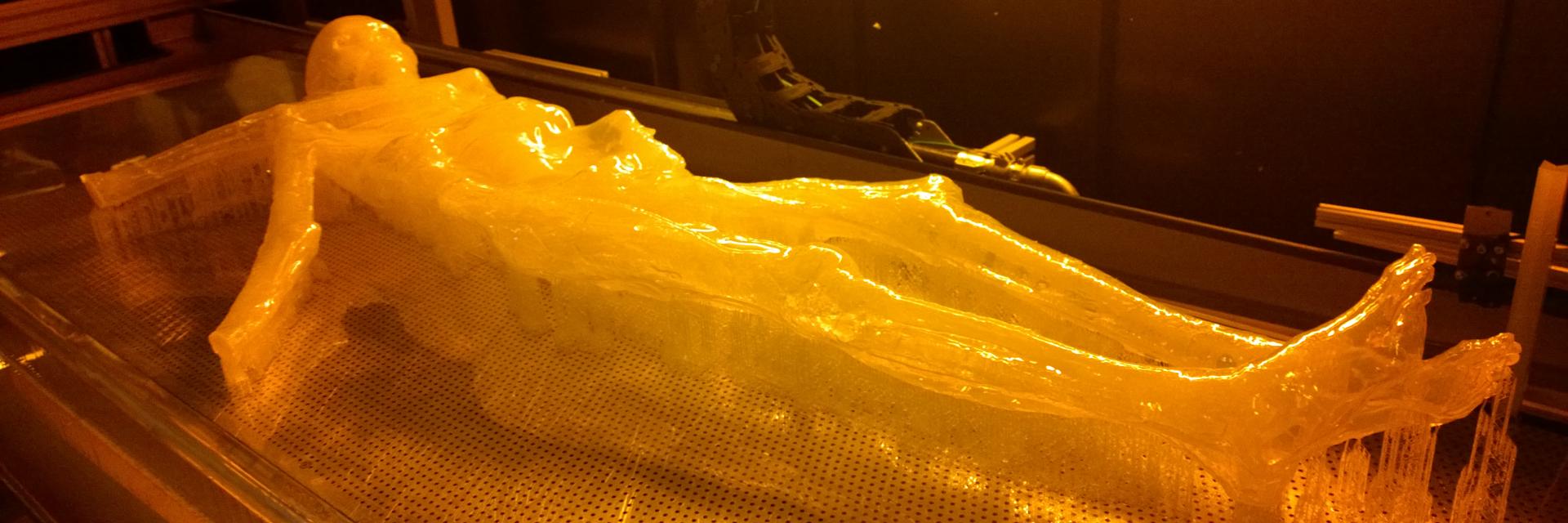CUSTOMER STORY
The Iceman Cometh: Ötzi Reborn on a 3D Printer

Five thousand years after he was murdered on a Tyrolean Alpine peak, Ötzi rose from liquid resin on a Mammoth stereolithography 3D printer at Materialise — or rather, his 3D-printed twin did. An interdisciplinary team, comprising scientists, archeologists and historians, turned to Materialise to create the first 3D-printed replica of Ötzi’s mummified body in aid of research. Watch the whole process of 3D printing a mummy here!
Ötzi: What the iceman means for scientific research
After Ötzi was killed — the circumstances of which are the subject of a whole different debate — his body was frozen over and covered in ice. In the harsh, frigid terrain of the Alps, his body became cryogenically mummified. As a result, when he was discovered in 1991 by a pair of hikers, the 5000-year-old body was remarkably intact. Named after the Ötztal Alps where he was found, Ötzi provides scientists a window into Stone Age life. Thanks to Ötzi, for example, we have some idea of what people ate and wore around 3,300 BCE. We even know the medical conditions to which Ötzi and his contemporaries might have been prone. Ötzi’s hardened arteries suggest a tendency to heart disease, and the surviving parts of his digestive tract show the presence of a gut bacteria that may have caused him some kind of abdominal inflammation.
But even beyond what Ötzi’s insides mean for scientific research, even his outward form holds priceless clues to demystify life in his times: his goat leather coat, his bearskin hat, and his tattoos are all markers of a long-lost culture. But there is only one Ötzi, and his body is enshrined at one museum in South Tyrol, Italy. How do you bring the fascinating insights to as many people as possible, without compromising the very delicate integrity of the mummified body? Through 3D Printing.
3D Printing a Mummy: Technology and Artistry
Paleo artist Gary Staab was brought in by the scientific research team to produce a replica of Ötzi. As a specialist in recreating highly accurate 3D models, Gary had previously collaborated with Materialise for a 3D-printed replica of Egyptian pharaoh King Tutankhamen. Being familiar with Materialise’s products and services, Gary turned to us for another collaboration on another mummy.
Scanned images of Ötzi would first be converted into a virtual 3D model which could then be 3D-printed and post-processed with Gary’s own prodigious artistic skill to make it resemble the original as closely as possible. The whole process was a combination of advanced technology and skilled artistry, which Gary calls a hybrid process. “Materialise process-segmented all of the scan data, made a fantastic accurate print, and I was able to add the details over the top of the print,” summarizes Gary.


Putting Plans into Action: From Mimics to Mammoth Stereolithography
To begin, Ötzi was subjected to standard medical imaging in the form of CT scans. For standard cases, such as CT scans of any living person today, it is a fairly straightforward procedure for Materialise Mimics to convert the scans into a virtual 3D model. But it wasn’t that easy for a 5000-year-old body, as Materialise application engineer Eric Renteria found out firsthand.
“When I tried putting him back together from the scanned slices, the pieces didn’t seem to match,” says Eric. “So I did some research and found his total height and compared that to the total height of all the pieces I had reconstructed. Once I saw that there was a mismatch, I moved his head piece into the correct spatial location, which revealed that there was a gap missing.” Of the 2827 image data slices which eventually constituted Ötzi’s finished virtual 3D model, the gap accounted for approximately 86. To reconstruct the missing part, Eric first mirrored part of Ötzi’s ribs and painstakingly redesigned the gap in 3-matic: and then the model was ready for 3D Printing. On a Mammoth Stereolithography machine, the 5’5” model was printed in a single build.
Then it was time for Gary to work his artistic magic on the 3D-printed replica, which he detailed, painted and textured into a virtual twin of Ötzi. Watching Gary work on the replica is a fascinating experience at the intersection of technology and artistry. For Gary, 3D-printed data provides an accuracy that allows him to concentrate fully on finer details. “Using the scan data is a far more accurate way to create the final replica, as opposed to using analog measurements. It allows me to work on the tiniest of details, filling in the blanks of those details, and all those volumes and forms are built in 3D.”
Share on:
You might also like
Never miss a story like this. Get curated content delivered straight to your inbox.
